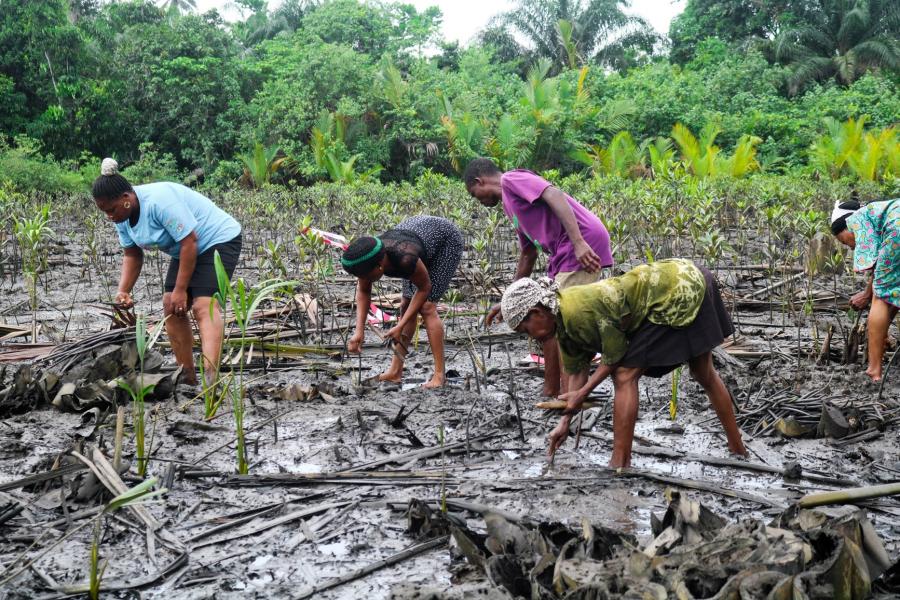What is the UN Declaration on the Rights of Indigenous Peoples?
The UN Declaration is the first comprehensive human rights document entirely devoted to the rights of Indigenous Peoples as peoples. It includes the rights to land, language, self-determination, and many other things (see the description on the other side of this sheet). The Working Group that produced the declaration, after a quarter century of debate, included governments and many Native peoples, participating on an equal footing. The UN General Assembly adopted the declaration in 2007, with only four countries voting against it, unfortunately one of those countries was the United States.
What Difference would the Declaration Make?
The declaration will help Native Americans in several ways. First, it provides an internationally agreed-upon baseline for Indigenous rights so that everyone—especially Indigenous Peoples and governments—knows what their rights are and can form laws and policies that honor those rights. The declaration can be used proactively to help reshape existing law or guide the development of new law. If, for example, the government is considering a bill that would allow mining companies to set up operations on an Indigenous communities’ traditionally held land, the community can point to the declaration’s provisions prohibiting such activities without first gaining their free, prior, and informed consent (Article 32).
Second, the declaration can be used to influence the formation and implementation of government policies. It can help tribes inform government agencies about their responsibilities by supplying benchmarks for services—such as the provision of healthcare—that while Indigenous-appropriate, is also equal to what non-Native citizens receive (Article 24).
Third, the declaration will help governments and courts clarify and update the law. Many statutes are worded in ways that leave them open to interpretation—interpretation that often does not favor Native Americans. The declaration provides explicit language detailing Native peoples’ rights, which can inform a judge’s interpretation of the law and decision in the case. Boundary disputes, for example, might benefit from the specific language describing Native land rights in Article 26.
Does This Mean Native Peoples’ Troubles Are Over?
The declaration is not a magic bullet. Citing it will not automatically resolve a tribe’s legal cases or necessarily prompt the government to take appropriate action on issues. But it does add a powerful tool to Native Peoples’ toolkits. The more the declaration is used, the more it will become a working part of the government’s understanding of the law. Over time it will help transform legislation, regulations, and policies so that they better address the rights of Native Americans.
What Rights Does the Declaration Contain?
- Overarching principles (Articles 1-6): Rights to recognition of all existing human rights incluing nondiscrimination, self-determination, autonomy, and maintenance of Indigenous institutions.
- Life, integrity, and security (Articles 7-10): Rights to freedom from genocide, forced assimilation, or destruction of Indigenous culture, or forced relocation from Indigenous land; and the rights to integrity and security.
- Cultural, spiritual, and linguistic identity (Articles 11-13): Rights to practice and revitalize Indigenous culture and the transmission of histories, languages, etc; and to the protection of traditions, sacred sites, ceremonial objects, and repatriation of remains.
- Education, information, and labor rights (Articles 14-17): Rights to education, including the right to Indigenous educational institutions and instruction in Indigenous languages; to have Indigenous cultures reflected in education and public information; to have access to the media (both mainstream and Indigenous); and to be protected from economic exploitation.
- Participatory development and other economic and social rights (Articles 18-24): Rights to participate in government decision-making through representative bodies; to guarantees against violence and discrimination for women and children; to development; and to access to traditional health practices and medicines.
- Land, territories and resources rights (Articles 25-32): Rights to maintain traditional connections to lands and territories; to redress for lands that have been taken; to conservation and protection of the environment; to prevention of the storage of hazardous waste or military activities on Indigenous land; to protection of traditional knowledge, cultural heritage, and intellectual property; and to fair procedures, including the opportunity to give free, prior, and informed consent in advance of any development on Indigenous lands.
- Indigenous Institutions (Article 33–37): Rights to determine tribal membership and maintain tribal institutions (including judicial systems); to maintain relations across international borders; and to recognize treaties, agreements, and other constructive arrangements with the government.
- Implementation of the Declaration (Articles 38–42):Requires the government and UN agencies to implement the provisions of the declaration by providing access to financial and technical assistance providing conflict resolution processes that are just and fair.
Read the text of the Declaration here.



